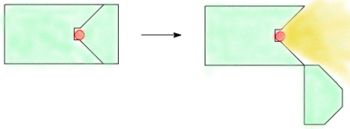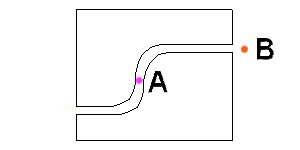Radiographic equipment: Difference between revisions
imported>Meg Taylor (update) |
mNo edit summary |
||
| Line 60: | Line 60: | ||
In some cases, industrial radiography is done with [[neutron]]s. This type of radiography is called Neutron Radiography (NR, Nray, N-Ray) or Neutron Imaging. Neutron Radiography can see very different things than X-rays, because neutrons can pass with ease through lead and steel but are stopped by plastics, water and oils. Neutron sources include radioactive (<sup>241</sup>Am/Be and Cf) sources, electrically driven D-T reactions in vacuum tubes and conventional critical nuclear reactors. It might be possible to use a [[neutron]] amplifier to increase the neutron flux.[http://www.tfd.chalmers.se/~valeri/Mars/Mo-o-f10.pdf] | In some cases, industrial radiography is done with [[neutron]]s. This type of radiography is called Neutron Radiography (NR, Nray, N-Ray) or Neutron Imaging. Neutron Radiography can see very different things than X-rays, because neutrons can pass with ease through lead and steel but are stopped by plastics, water and oils. Neutron sources include radioactive (<sup>241</sup>Am/Be and Cf) sources, electrically driven D-T reactions in vacuum tubes and conventional critical nuclear reactors. It might be possible to use a [[neutron]] amplifier to increase the neutron flux.[http://www.tfd.chalmers.se/~valeri/Mars/Mo-o-f10.pdf] | ||
==References== | ==References== | ||
{{reflist|2}} | {{reflist|2}}[[Category:Suggestion Bot Tag]] | ||
Latest revision as of 16:00, 9 October 2024
Radiographic equipment forms images, for a variety of applications, using ionizing radiation both in the electromagnetic spectrum and particles such as neutrons. The imaging may be of a still image (e.g., a medical X-ray or an image of a weld), motion of moderate speed (e.g., medical fluoroscopy), or captures of extremely high speed events (e.g., hydrodynamic testing of explosive devices).
Photon sources
A variety of methods are used to provide photons in various parts of the electromagnetic spectrum. [1]
X-ray sources
A high energy X-ray machine can be used for industrial radiography while for medical radiography a lower voltage can be used with a sealed X-ray tube, it is often important to use a high accelerating voltage to provide the electrons with a very high energy, this is because in a braking radiation source the maximum photon energy is determined by the energy of the charged particles. A recent development is the betatron, which is a device similar to a cyclotron that acts as a very intense photon source.[2][1]
Radioisotope sources
These have the advantage that they do not need a supply of electrical power to function, but they do have the disadvantage that they can not be turned off. Also it is difficult using radioactivity to create a small and compact source which offers the photon flux which is possible with a normal sealed X-ray tube.
It might be possible to use 137Caesium as a photon source for radiography but this isotope has the disadvantage that it is always diluted with inactive caesium isotopes. This means that it is difficult to get a physically small source, a large radioactive volume of the source will make it impossible to get the finest detail from a radiographic examination.
Both cobalt-60 and caesium-137 have only a few gamma energies which make them close to monochromatic. The photon energy of cobalt-60 is higher than that if caesium-137 which allows cobalt sources to be used to examine thicker sections of metals than those which could be examined with Cs-137. Iridium-192 has a lower photon energy than cobalt-60 and its gamma spectrum is complex (many lines of very different energies), but this can be an advantage as this can give better contrast for the final photographs.
It has been known for many years that a inactive iridium or cobalt metal object can be machined to size. In the case of cobalt it is common to alloy it with nickel to improve the mechanical properties. In the case of iridium a thin wire or rod could be used. These precursor materials can then be placed within stainless steel containers which are leak tested before being converted into radioactive sources. These objects can be processed by neutron activation to form gamma emitting radioisotopes. The stainless steel has only a small ability to be activated and the small activity due to 55Fe and 63Ni are unlikely to pose a problem in the final application because these isotopes are beta emitters which have very weak gamma emission. The 59Fe which might form has a short half life, so by allowing a cobalt source to stand for a year much of this isotope will decay away.
The source is often a very small object which needs to be transported to the site where the work is to be conducted in a shielded container. It is normal to place the film in industrial radiography, clear the area where the work is to be done, add shielding (collomators) to reduce the size of the controlled area before exposing the radioactive source. A series of different designs have been developed for radiographic "cameras". Rather than the "camera" being a device which accepts photons to record a picture, the "camera" in industrial radiography is the radioactive photon source.
Torch design of radiographic cameras
One design is best thought of as being like a torch. The radioactive source is placed inside a shielded boxed, a hinge allowed part of the shielding to be peeled back exposing the source so allowing the photons to leave the radiography camera.
Another design for a torch is one where the source is placed in a metal wheel, this can turn inside the camera to move between the exposed and storage sites.
Cable based design of radiographic cameras
One group of designs use a radioactive source which comes out on a cable from a shielded container.[3] One such unit was involved in an accident [2] which occurred in Bolivia. This type of radiography could be compared to the remote afterloading method in Brachytherapy. In one design of equipment the source is stored in a block of lead or DU metal which has a S shaped tube like hole which passes through the block. In the safe position the source is in the centre of the block and is attached to a metal wire which extends in both directions, to use the source a guide tube is attached to one side of the block while a drive cable is attached to the other end of the short cable. Using a hand operated winch the source is then pushed out of the shield and along the guide tube to were it is needed.
Microsecond X-ray pulses
It is possible using a particle accelerator to generate a short pulse of high energy electrons, these electrons are used to create X-rays by braking radiation.[3]. The X-rays are detected using a semiconductor detector which is an array of silicon diodes. Such equipment has been used for the X-ray version of high speed flash photography. For example using diesel (motor fuel) which has been doped with cerium the operation of fuel injectors has been investigated.[4] Some examples of radiography done using a 5 MeV electron linear accelerator driving a bremmstrahlung source (1 mm Tungsten on a 9 mm copper sheet) can be seen here.[5]
Proton radiography
As an alternative high energy pulsed proton beams can be used for the high speed examination of objects.[6]
Neutron sources
In some cases, industrial radiography is done with neutrons. This type of radiography is called Neutron Radiography (NR, Nray, N-Ray) or Neutron Imaging. Neutron Radiography can see very different things than X-rays, because neutrons can pass with ease through lead and steel but are stopped by plastics, water and oils. Neutron sources include radioactive (241Am/Be and Cf) sources, electrically driven D-T reactions in vacuum tubes and conventional critical nuclear reactors. It might be possible to use a neutron amplifier to increase the neutron flux.[4]
References
- ↑ Radiation Protection and Safety in Industrial Radiography, International Atomic Energy Agency
- ↑ http://www.adelphitech.com/publ/listPublic/Novel%20sources/Kaplin_RSI_73_63_btron_2002.pdf
- ↑ http://ean.cepn.asso.fr/pdf/program5/session%202/3_giese.PDF
- ↑ Jin Wang, Ultrafast X-Radiography and X-Tomography of High Pressure and High-Speed Fuel Sprays, Argonne National Laboratory
- ↑ L. Auditore et al., A Compact 5 MeV S-Band Electron LINAC Based X-ray source for Industrial Radiography, Proceedings of 2005 Particle Accelerator Conference, Knoxville, Tennessee
- ↑ Brian Fishbine, Proton Radiography: Sharper X-Rays for Radiotests, Los Alamos National Laboratory


